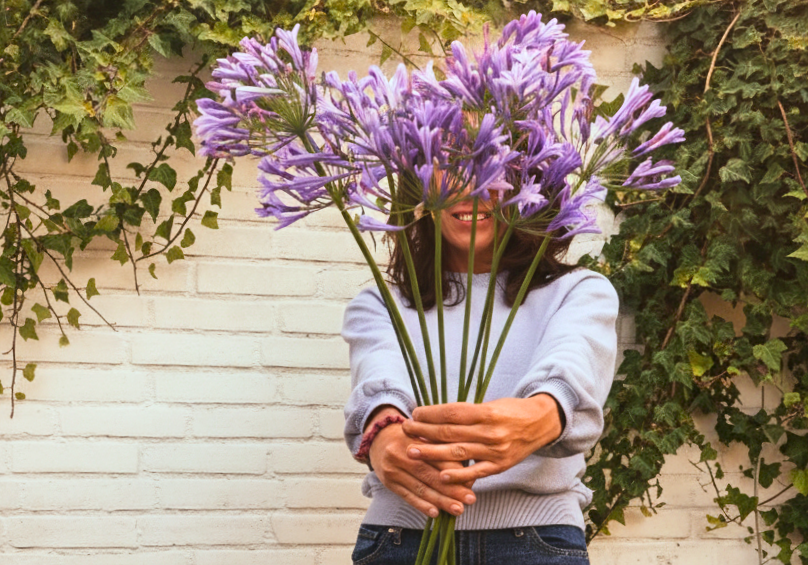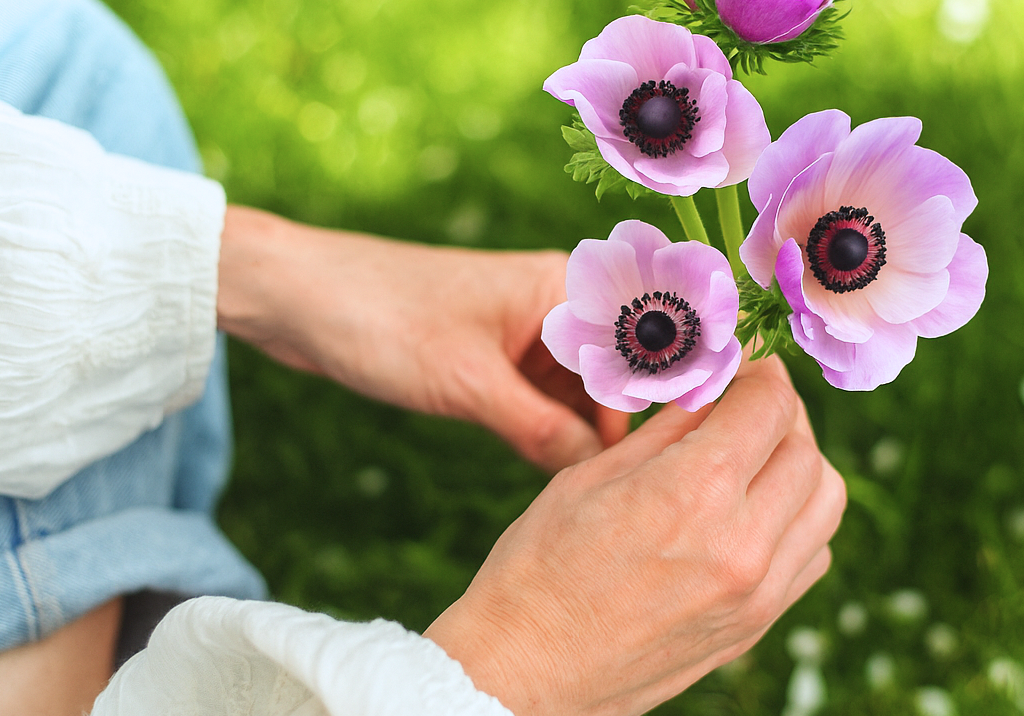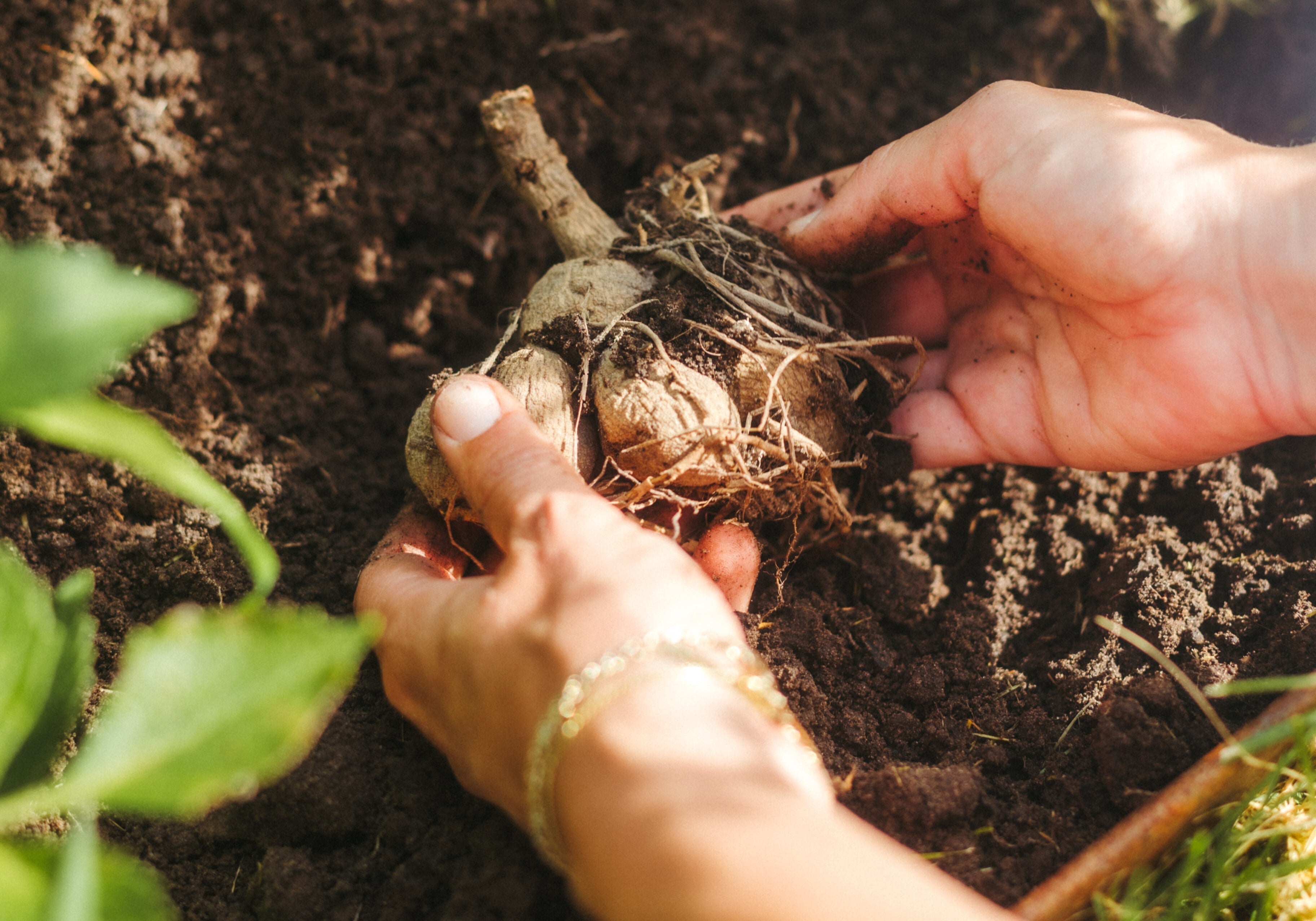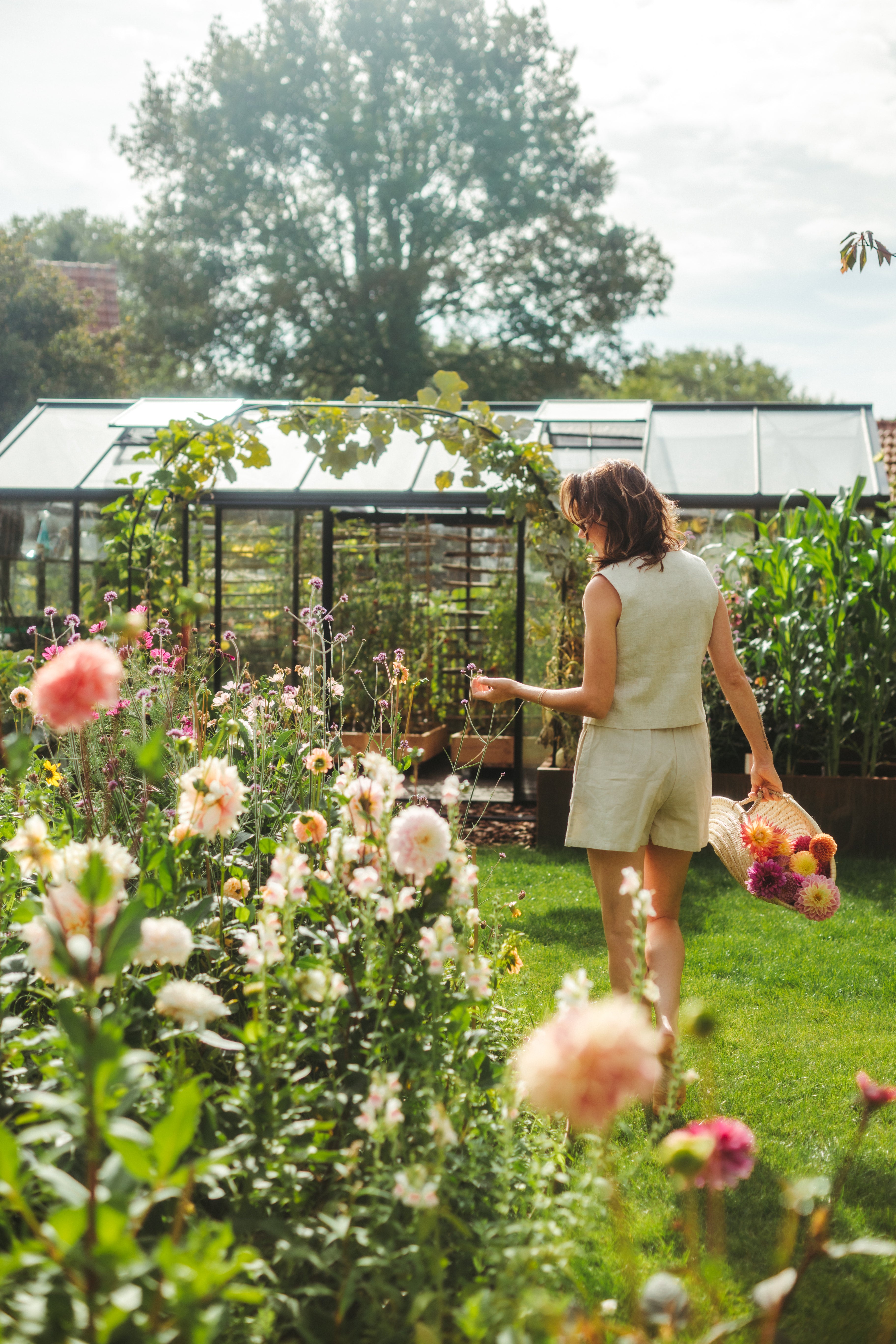The dahlia has made a real comeback in the past two years. When we started The Blooming Company seven years ago, we sold dahlias as a byproduct, primarily to older people, because young people simply didn't have time to spend so much time in the garden. Now, dahlia tubers are in high demand, and you see the most beautiful photos of dahlia gardens on social media. I'm thrilled with this change and think it's a fantastic development that more and more young people are getting their hands dirty in the garden. Gardening isn't work, it's relaxation. Okay, now back to the real subject of this blog:
How do you plant dahlias?
♡ 1. What's below and what's above?
This is probably the most frequently asked question when it comes to dahlia tubers. With a dahlia tuber, you can clearly see where the old stem has been cut off; this is also the top of the tuber, so plant the tuber with the old stem facing up. I understand that you want to plant the tuber correctly, but even if you plant the bulb upside down, the plant will still grow tall. It grows towards the warmth of the sun, so eventually some green will emerge.
♡ 2. How deep do you plant a dahlia tuber?
A dahlia tuber loves the sun and its warmth, so don't plant it too deep. I often leave the old stem slightly above the soil and lightly cover the tuber with about 2 cm of soil.
♡ 3. What planting distance do you keep for dahlias?
It's tempting to plant the tubers too close together, but it's important to maintain sufficient spacing. At least 40 to 50 cm between each dahlia tuber. If you plant them too close together, the plant won't get enough sunlight, causing it to search for it. This results in a very tall, lanky plant with weak stems. Furthermore, little sunlight will reach the soil, which can cause the soil to remain moist and the bottom of the plant to rot. So, maintain a good distance, and the bouquet of flowers will grow large enough.
♡ 4. How much water do you give a dahlia?
Dahlia tubers are harvested in the fall and then delivered in the spring. The tubers are therefore quite dry when you plant them, and to stimulate root growth, they do need water. The soil should always be slightly moist, but not wet, as this can cause the tuber to rot. I always find it difficult to give advice on this because it's a matter of feeling. I often advise simply sticking your finger deep into the soil. If a thin layer of soil sticks to your finger, it's good. If a lot of soil sticks to your finger, it's too wet; if almost no soil sticks to your finger, it's too dry.
♡ 5. Unwanted visitors:
A beautiful garden also brings challenges, especially with dahlias, such as snails and aphids. I don't use pesticides in my garden, so I want to protect my plants naturally. The following tips have been very helpful:
♡ Garlic! Both aphids and snails dislike the smell of garlic. You can therefore plant garlic cloves among the dahlias; the leaves will then absorb the garlic scent, better protecting them from unwanted predators. You can also spray the plant with garlic water, but you should repeat this after it rains.
♡ Water early in the morning, not in the evening. Snails love moisture and are active en masse in the evening. Watering in the morning instead of the evening will significantly reduce the number of snails attracted to your dahlias.
♡ Snails also do not like sharp objects such as shells, eggshells and wood chips, so you can also block the path to your dahlia plant with these.
♡ Go into the garden just after sunset with a flashlight to collect snails. Then release them somewhere where they will cause less damage.
Snails will always be around, and that's a good thing, because they're also very useful. They eat dead plant matter, nourish your soil, aerate it, and provide food for hedgehogs and birds. It's a circle of life. So please don't use poison, but try to minimize the damage with the tips above.
Do you have any questions after reading these tips, or perhaps you have some useful tips of your own?
Then leave a message at the bottom of the blog, and I'll be happy to help you!
Love,
Isabeau




